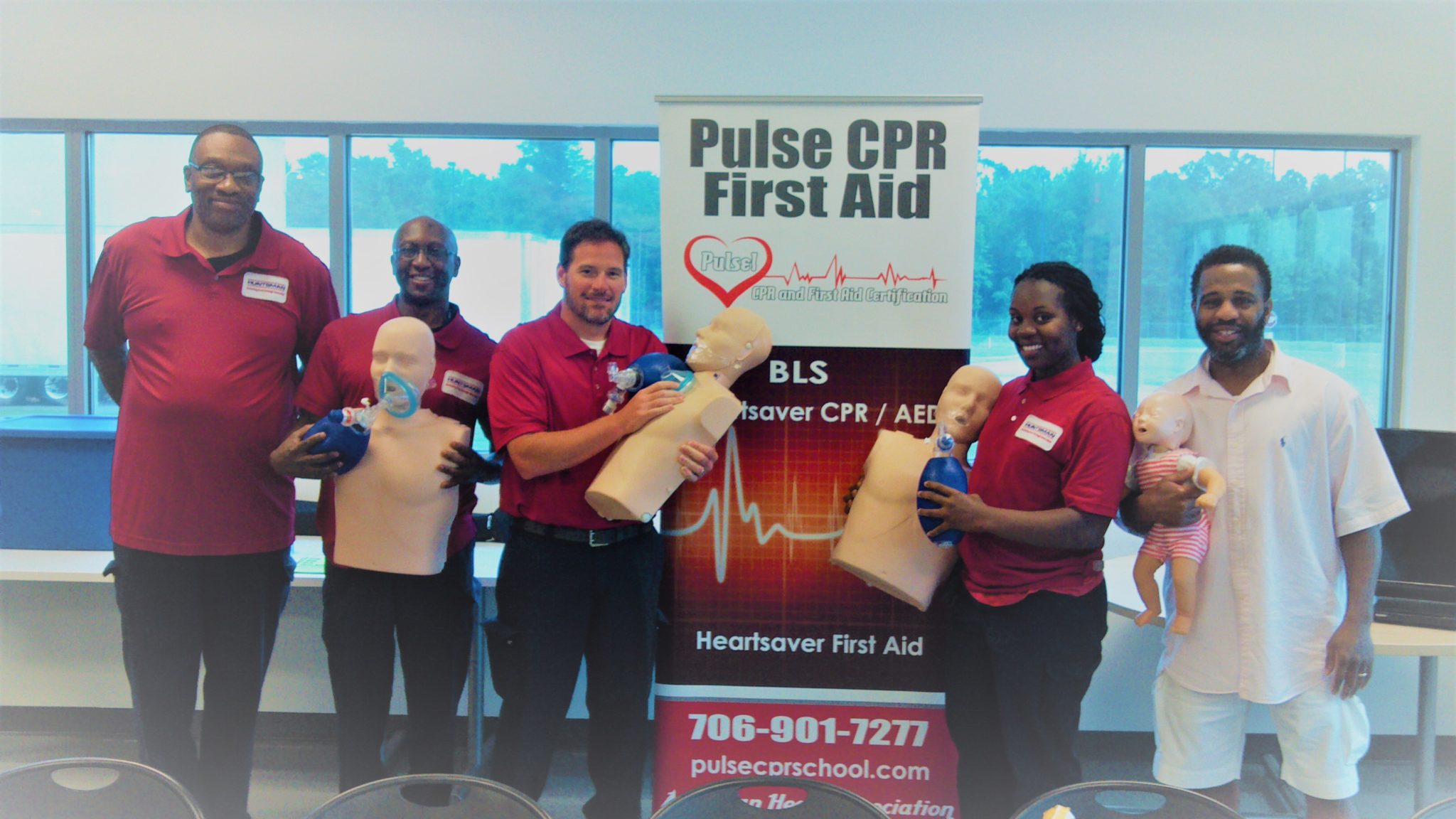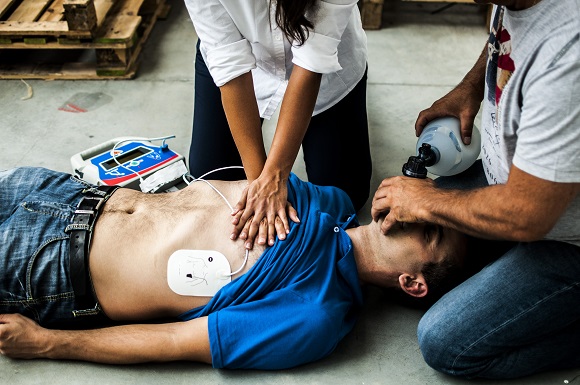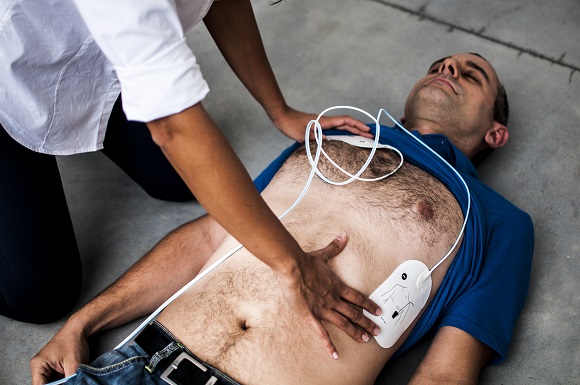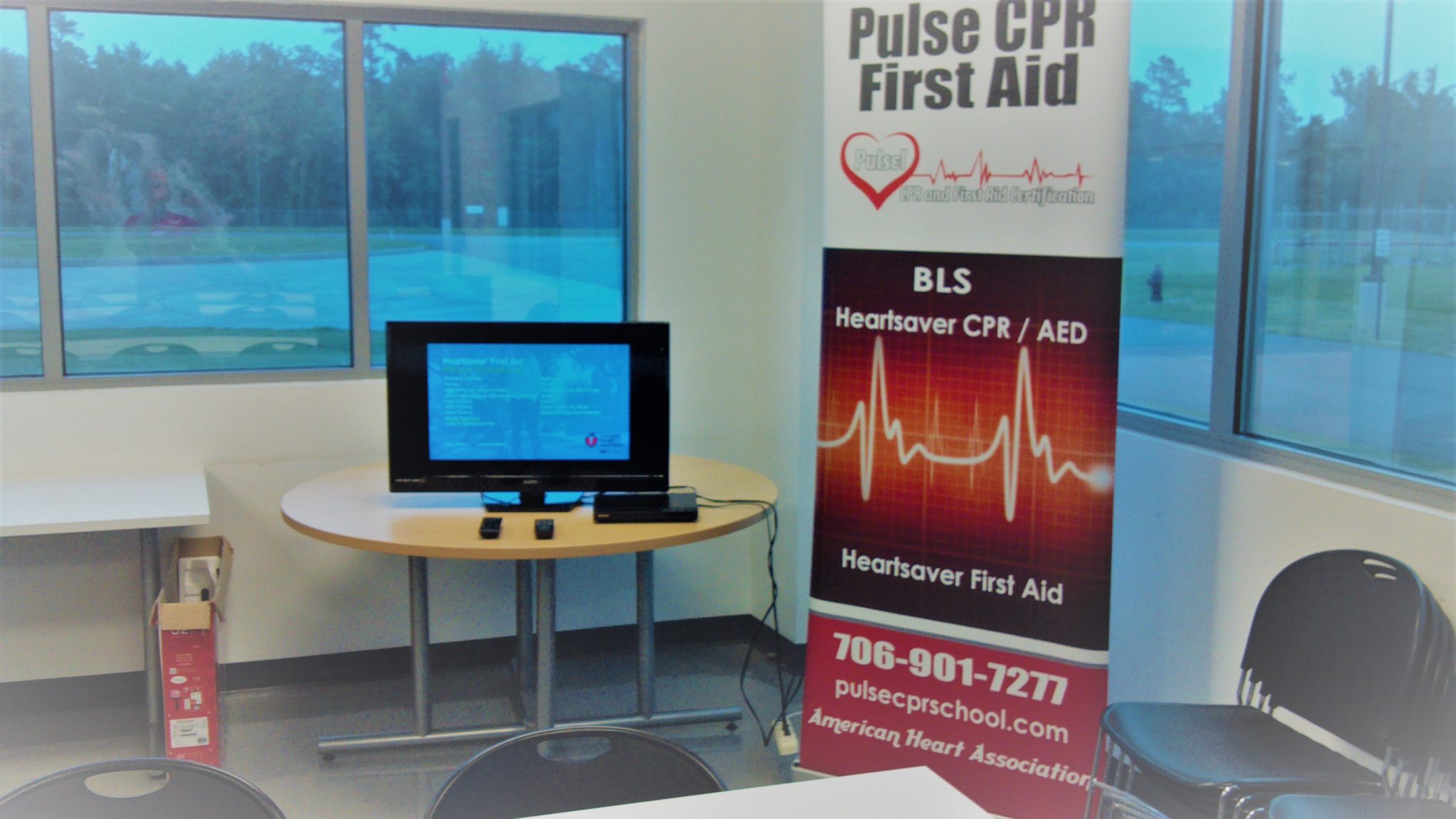Corporate CPR.
What Is Corporate CPR Training and Why Is It So Important?

Sudden cardiac arrest is the leading cause of death in adults over the age of 40. The antidote to that startling statistic is this: sudden cardiac arrest (SCA) is reversible in most victims if they get the right type of medical attention within the first few minutes. That’s where corporate CPR training comes in.
While heart attacks aren’t discerning about where and when they hit, business owners can be discerning when it comes to getting important, lifesaving information into the hands of their employees. The most deadly cardiac arrests typically occur between 6:00 a.m. and 12:00 noon and, according to OSHA, about 10,000 sudden cardiac arrests occur in the workplace each year.
By providing routine corporate CPR training for key employees, management or – as many experts advise, the entirety of the payroll staff – you increase the survival chances for each and every person that could experience a cardiac arrest in or around your workplace – employees, clients and/or prospects alike.

What is Corporate CPR Training?
The idea that everyone should be CPR certified is nice in theory, but it’s more difficult to execute in reality.
Corporate CPR training is the solution, bringing certified CPR trainers right to your place of business, minimizing the amount of time employees spend commuting to/from an off-site CPR training class and reducing employee downtime.

Bringing certified CPR and AED training into your workplace:
- Is more convenient
- Saves money – particularly in the form of employee travel/meal reimbursement
- Makes lessons more practical and comfortable, since students are in their “home” environment
- Makes it easy to facilitate mandatory employee compliance
- Saves lives
Corporate CPR Training Saves Lives
 Just last year, respiratory therapist Cindy Keely – a native West Virginian – was sitting at her desk when she was frantically paged to a nearby conference room. A woman attending a cardiovascular care volunteer meeting had collapsed. Keely’s quick thinking enabled her to implement both hands-on CPR and AED training – saving the victim’s life.
Just last year, respiratory therapist Cindy Keely – a native West Virginian – was sitting at her desk when she was frantically paged to a nearby conference room. A woman attending a cardiovascular care volunteer meeting had collapsed. Keely’s quick thinking enabled her to implement both hands-on CPR and AED training – saving the victim’s life.

Most workplace CPR classes incorporate AED (automated external defibrillator) training along with CPR. Together, these two certifications pack a powerful punch. OSHA writes, “Trials have shown that SCA survival rates doubled when CPR was combined with AED use, compared to CPR alone.”
Are you in compliance with local, state and federal mandates?
In a perfect world, CPR and AED certification would be a part of the educational norm. And, in fact, several states around the nation are implementing hands-on CPR training as part of their graduation requirements. Until that becomes a nationwide norm, most of us rely on professionals to hold this knowledge for the community.
Many industry and corporate regulatory requirements mandate that employees holding certain professional titles, or who hold certain job responsibilities, have some level of CPR and/or AED training or certification.

Professions that Require Workplace CPR Skills
Examples include healthcare professionals, law enforcement officers, daycare providers and educators. CPR certifications are also more likely to be required for those at higher risk for experiencing a cardiac arrest – such as utility personnel, electricians and construction workers.
If employees at your business are legally required to hold a current CPR certification, workplace CPR classes are the way to go. In addition to making sure your employees are in compliance, you also alleviate any potential litigation that could ensue if an accident occurs and an employee was never certified, or their certification has lapsed.

Why invest in AEDs if employees know CPR?
Sometimes, companies who invest in workplace CPR training hedge when it comes to the extra investment of AED devices. Here are a few statistics from the American Heart Association that should change the tide:
- A victim’s chances of survival diminish by 7% to 10% with every minute that passes after an SCA. After 10 minutes, very few victims survive.
- Effective CPR, administered within the first several minutes, can double or triple a victim’s chances of survival.
- Studies indicate that when an AED is applied within the first minute after a heart-related incident, 90% of patients’ hearts can be pumping on its own by the time EMS arrive.
- Georgia passed legislation providing civil liability immunity regarding good-faith use of AED.
- According to Ready.gov, all levels of a company’s emergency response team should be trained to administer first aid, CPR, and AED.
Administering an AED Is Much Easier than You Might Think
 Contrary to popular belief, AED is as simple to implement as CPR and requires less physical exertion. Units are well-marked with easy-to-follow instructions, removing guesswork from the equation. Most facilities are required to keep AED equipment up-to-date, which is why we offer regular AED inspections as part of our services.
Contrary to popular belief, AED is as simple to implement as CPR and requires less physical exertion. Units are well-marked with easy-to-follow instructions, removing guesswork from the equation. Most facilities are required to keep AED equipment up-to-date, which is why we offer regular AED inspections as part of our services.
Learn More about Corporate CPR & AED Training

Whether your employees are required to have CPR certifications, or you are interested in creating a company culture that prioritizes the well-being of your workforce, corporate CPR training is a smart, effective and affordable way to empower employees. The knowledge they acquire can save lives – and one of them might even be yours.
Contact us to learn more about our onsite Corporate CPR Training courses, AED installation & training, or any of our other first aid educational programs.


